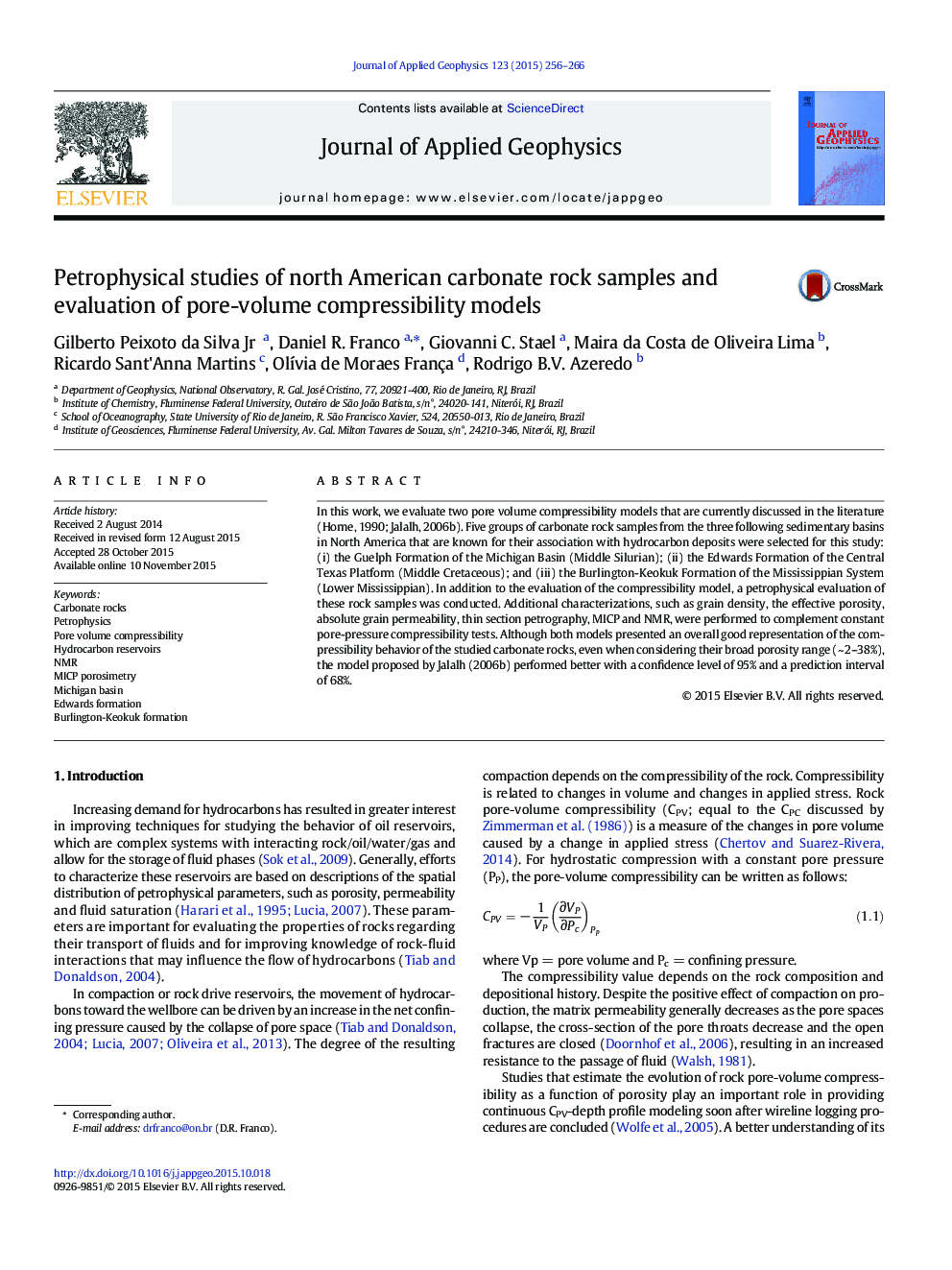| Article ID | Journal | Published Year | Pages | File Type |
|---|---|---|---|---|
| 6447068 | Journal of Applied Geophysics | 2015 | 11 Pages |
Abstract
In this work, we evaluate two pore volume compressibility models that are currently discussed in the literature (Horne, 1990; Jalalh, 2006b). Five groups of carbonate rock samples from the three following sedimentary basins in North America that are known for their association with hydrocarbon deposits were selected for this study: (i) the Guelph Formation of the Michigan Basin (Middle Silurian); (ii) the Edwards Formation of the Central Texas Platform (Middle Cretaceous); and (iii) the Burlington-Keokuk Formation of the Mississippian System (Lower Mississippian). In addition to the evaluation of the compressibility model, a petrophysical evaluation of these rock samples was conducted. Additional characterizations, such as grain density, the effective porosity, absolute grain permeability, thin section petrography, MICP and NMR, were performed to complement constant pore-pressure compressibility tests. Although both models presented an overall good representation of the compressibility behavior of the studied carbonate rocks, even when considering their broad porosity range (~Â 2-38%), the model proposed by Jalalh (2006b) performed better with a confidence level of 95% and a prediction interval of 68%.
Related Topics
Physical Sciences and Engineering
Earth and Planetary Sciences
Geophysics
Authors
Gilberto Peixoto Jr, Daniel R. Franco, Giovanni C. Stael, Maira da Costa de Oliveira Lima, Ricardo Sant'Anna Martins, OlÃvia de Moraes França, Rodrigo B.V. Azeredo,
